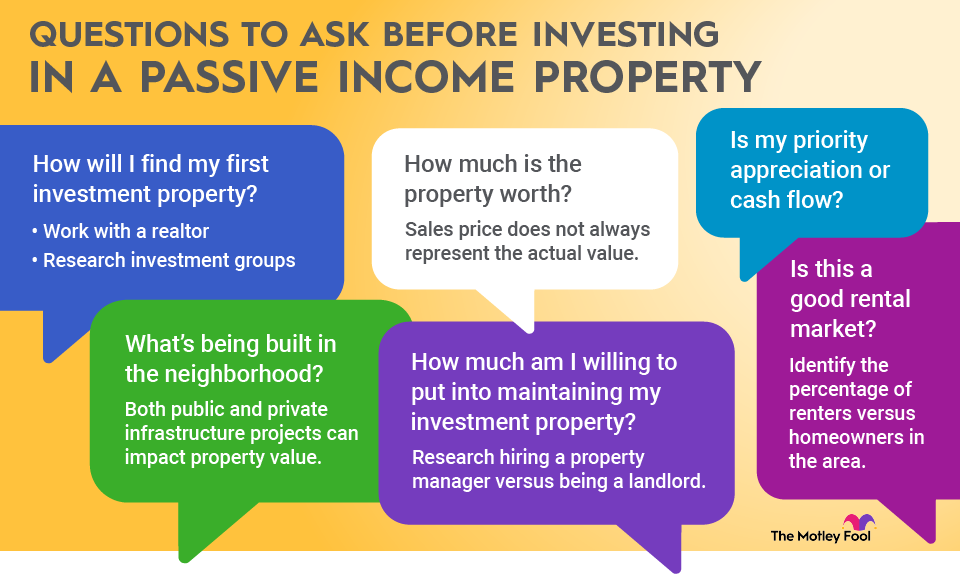There are many ways to make real estate passive income. They range from low-cost, truly passive investments to more hands-on methods.
With so many ways to collect passive income from the real estate sector, there are options for any budget and time commitment.

We'll explore what it means to make passive income from real estate investments and highlight how you can turn real estate into a moneymaker. We'll also consider some of the mistakes to avoid that can affect your ability to earn passive real estate income.
What is real estate passive income?
The IRS defines passive income as regular earnings from either:
- A trade or business activity you don't materially participate in during the year, such as dividend income or royalties from a book.
- Rental activities, even if you do materially participate, unless you're a real estate professional.
Passive income from real estate includes any income generated from rental activities and other real estate investments. Real estate passive income often requires an up-front investment that generates recurring income. Some passive real estate investing demands more hands-on management, while others are truly passive.
Ten ways to make passive income from real estate
Here's a brief look at some of the many ways to make passive income from real estate.
1. Publicly traded real estate investment trusts (REITs)
Real estate investment trusts (REITs) that trade publicly on stock market exchanges are traditionally the easiest and lowest-cost way to invest in real estate to collect passive income. REITs must distribute 90% of their taxable net income to shareholders via dividends to maintain their tax-advantaged status with the IRS. That makes them a great source of income.
REITs are also a low-cost investment since shares of most REITs trade for less than $100 each. They're passive investments because you don't need to do any work other than research and follow the investment. Public REITs are also highly liquid because you can buy and sell shares through a brokerage account any day the stock market is open.
There are around 200 publicly traded REITs. Many focus on specific property sectors, such as industrial, office, retail, or residential. They can also concentrate on certain markets, such as the Sun Belt region or the West Coast. That provides investors with lots of passive income investment options.
There are some downsides to publicly traded REITs, including exposure to stock market volatility. And while there are many REIT options, it can be daunting for beginning investors to know which ones to buy.
Finally, a poorly managed REIT can find itself in financial trouble during a recession, which would cause the REIT to reduce or even temporarily pause its dividend while it works through the issues.
Related investing topics
Passive income investing mistakes to avoid
While real estate can be a great way to generate passive income, there are some pitfalls to avoid. These include:
- Not doing enough due diligence to understand the risks involved with a real estate investment.
- Taking on too much debt to purchase a real estate investment that you can't service if the income declines.
- Failing to account for the potential expenses to maintain a real estate investment.
- Not being comfortable with the volatility of stock prices or rental income.
- Not properly screening tenants.
- Choosing a real estate investment that involves more active management than you can give.
- Not diversifying your real estate portfolio beyond one investment -- unless it's an already-diversified investment such as an ETF or mutual fund.
The bottom line
Real estate investing is a great way to generate passive income. It offers a variety of options, enabling anyone to get started making passive income from the sector. While there are risks involved with real estate passive income, investors can reduce their risk by avoiding common mistakes.





